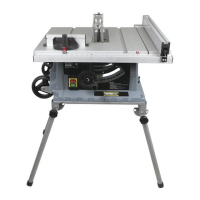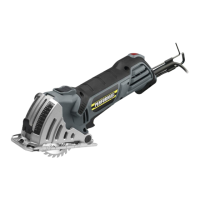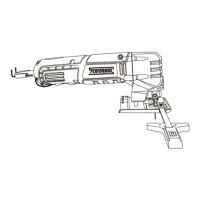Page 29
OPERATION
CUTTING BASE MOLDING
(FIG. 28)
Base moldings and many other moldings
can be cut on a compound miter saw. The
setup of the saw depends on the base
molding characteristics and applications.
Perform practice cuts on scrap materials
to achieve best result.
1. Always make sure moldings rest rmly
against the fence and table (Fig. 28).
Use the hold-down clamp provided or
C-clamps, and place tape on the area
being clamped to avoid marks on the
workpiece.
2. Reduce splintering by taping the cut
area prior to making the cut. Mark the
cut line directly on the tape.
3. Splintering typically occurs due to
incorrect blade style, a dull blade, a very
thin workpiece, or improperly dried
wood.
NOTICE: Always perform a dry run cut so
that you can determine whether the
operation being attempted is possible
before power is applied to miter saw.
FIG. 28
4. Place the workpiece at on the miter
table with one edge securely against the
fence. If the board is warped, place the
convex side against the fence. If the
concave edge of the board is against
the fence, the board could collapse on
the blade at the end of the cut and
jam the blade (Fig. 26 and 27).
5. Align the pencil line in the center of
the dual laser line.
6. Use the hold-down clamp to secure the
workpiece against the miter-saw table
and fence.
7. When cutting a long workpiece, use
extra support to hold the long workpiece.
CUTTING CROWN MOLDING
(FIG. 29)
FIG. 29
Fence
Mitre at 0°,
Bevel at 45°
Mitre at 45°,
Bevel at 0°
Miter Saw
Fence
Miter Saw
Molding lying at on miter
table (before clamping)
Molding standing up against fence
(before clamping)
